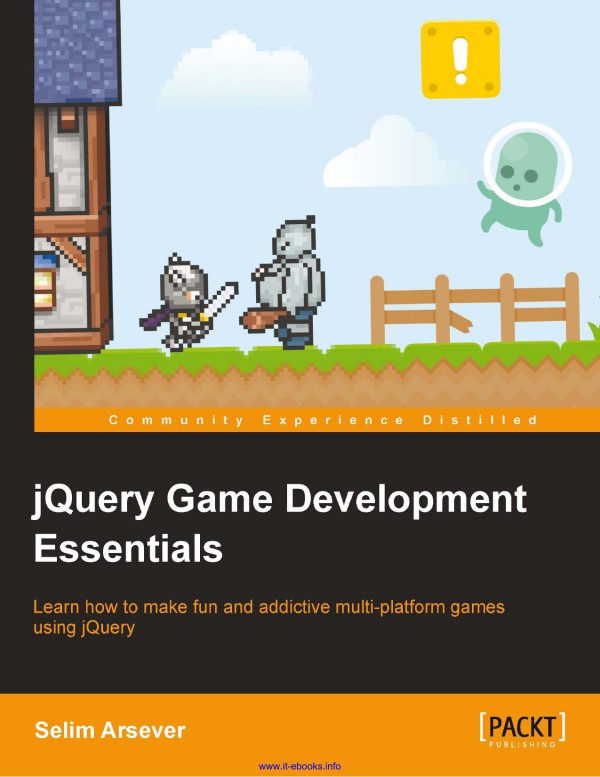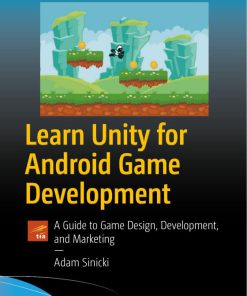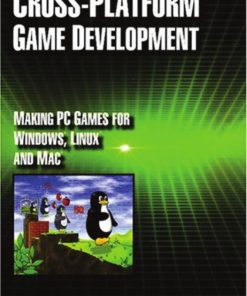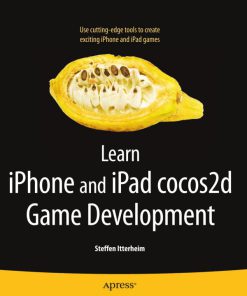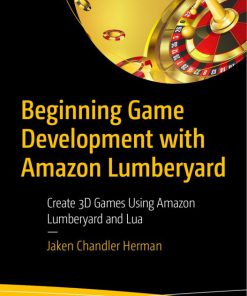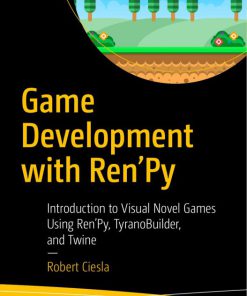(Ebook PDF) jQuery Game Development Essentials Learn how to make fun and addictive multi platform games using jQuery 1st edition by Selim Arsever 1849695075 9781849695077 full chapters
$50.00 Original price was: $50.00.$25.00Current price is: $25.00.
Authors:Selim Arsever , Series:Gaming [51] , Author sort:Arsever, Selim , Languages:Languages:eng , Published:Published:Apr 2013 , Publisher:Packt Publishing
jQuery Game Development Essentials Learn how to make fun & addictive multi-platform games using jQuery 1st edition by Selim Arsever – Ebook PDF Instant Download/DeliveryISBN: 1849695075, 9781849695077
Full download jQuery Game Development Essentials Learn how to make fun & addictive multi-platform games using jQuery 1st edition after payment.
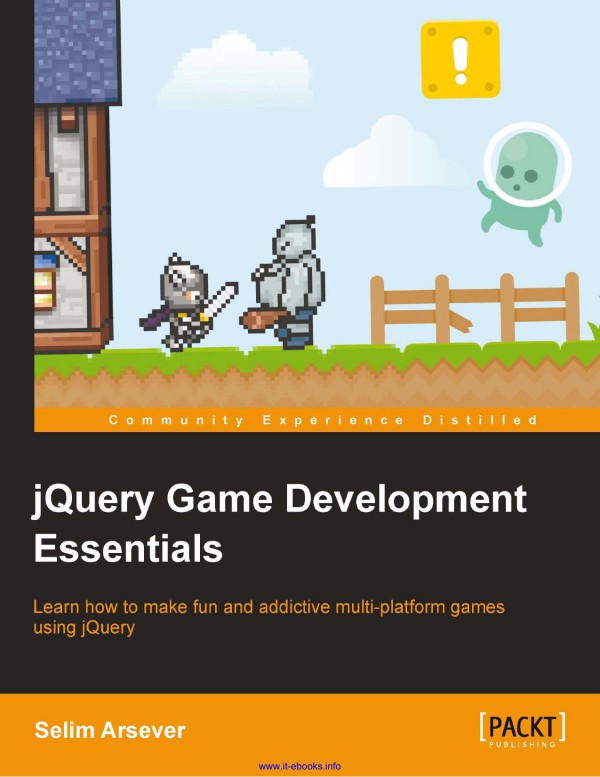
Product details:
ISBN-10 : 1849695075
ISBN-13 : 9781849695077
Author : Selim Arsever
Written as a concise yet practical guide with an explicit focus on utilizing jQuery for game development, you’ll learn how to create stunning games that look great – without the hassle of learning about a complex game engine in the process. Knowledge of JavaScript and jQuery as well as basic experience with frontend development is all you need to start making games in a matter of hours with this essential guide. Whilst also suitable for those who simply want to start making games with jQuery, it’s specifically targeted at web developers that want to experiment with and utilize their existing skills.
jQuery Game Development Essentials Learn how to make fun & addictive multi-platform games using jQuery 1st Table of contents:
1. jQuery for Games
The way of jQuery
Chaining
Polymorphism
Moving things around
Chaining animations
Managing the queue
.stop()
.clearQueue()
.dequeue()
.delay()
Other usages of queues
Handling of events
.bind()
.delegate()
Removing event handlers
jQuery 1.7
Associating data with DOM elements
Manipulating the DOM
.append()
.prepend()
.html()
.remove()
.detach()
Stay curious my friend!
Summary
2. Creating Our First Game
How does this book work?
Let’s get serious – the game
Learning the basics
Framework
Sprites
Implementing animations
Adding animations to our framework
Moving sprites around
Preloading
Initializing the game
Main loop
Main loop implementation
Collision detection
Summary
3. Better, Faster, but not Harder
Intervals and timeouts
One interval to rule them all
Code
Keyboard polling
Keeping track of the keys’ state
HTML fragments
Avoiding reflow
Moving your sprite around using CSS Transforms
Using requestAnimationFrame instead of timeouts
Summary
4. Looking Sideways
Offline divs
Groups
Sprite transformation
CSS transform
Adding transform to the framework
Tile maps
Naive implementation
Collision detection
Colliding with tile maps
Finding the colliding tiles
Sprite versus sprite collision
Coding the game
Basic setup of the game screen
Object-oriented code for the player
Updating the player’s position
Controlling the player’s avatar
Player control
Parallax scrolling
Creating enemies
Summary
5. Putting Things into Perspective
Optimizing tile maps for top-down games
Finding the visible tiles
Moving the tile map
Sorting the occlusion
Sprite occlusion
Level versus sprite occlusion
Collision detection
Player versus environment collisions
Using a tile map editor
Player versus sprite collision
Talking to NPCs
Fighting enemies
The complete game
Isometric tiles
Drawing an isometric tile map
Occlusion for isometric games
Summary
6. Adding Levels to Your Games
Implementing a multi-file game
Loading tile maps
Loading sprites and their behavior
Using $.ajax
Loading a JSON file
Loading a remote script
Debugging calls to $.ajax
.done()
.fail()
Modifying our platform game
Summary
7. Making a Multiplayer Game
World of Ar’PiGi
Managing the player’s account
Searching elements in the database
Creating a new player in the database
Keeping the player connected
Logging the user into the game
Keeping the players in sync
Retrieving all the other players
Updating the current player position
Client-side code
Taking care of monsters
Implementing server-side combat
Summary
8. Let’s Get Social
Creating a simple leaderboard
Saving highscores
Retrieving highscores
Displaying the highscores
Making cheating harder
Server-side verification
Making your variables less readable
Obfuscating your code
Making your network protocol less readable
Encoding values
Randomly naming the variables
Adding random variables
Integrating with Twitter
Twitter for dummies
Full access to Twitter’s API
Registering your game with Twitter
Server-side helper library
Authentication
Publishing high scores on Twitter
Integrating with Facebook
Authenticating with Facebook
Creating achievements
Publishing the achievements
Summary
9. Making Your Game Mobile
Making your game run well on mobile devices
Detecting mobile browsers
Client-side browser detection
Server-side detection
Should you really detect the browser?
Performance limitation – memory
Performance limitation – speed
Specifying the page’s visible area
Level of details
Touch control
D-pad
Analog joystick
Event handlers
Integrating our game with the springboard
Making your game installable
Configuring the status bar
Specifying the application icon
Specifying a splash screen
Using device orientation
Using the offline application cache
Using web storage
Summary
10. Making Some Noise
Abstracting audio
Using our small library
Embedding sound
Implementation
Supported format
HTML5 Audio element
Preloading a sound
Playing and stopping sounds
Web Audio API
Basic usage
Connecting more nodes
Loading more than one sound
So many nodes, so little time
Delay node
ScriptProcessor node
Panner node
Convolver node
Analyser node
DynamicCompressor node
BiquadFilter node
WaveShaper node
Flash fallbacks
SoundManager 2
Alternatives to SoundManager
Generating sound effects
People also search for jQuery Game Development Essentials Learn how to make fun & addictive multi-platform games using jQuery 1st:
learn game development with javascript
jquery game development
how to learn javascript for game development
jquery learning game
javascript game development for beginners

